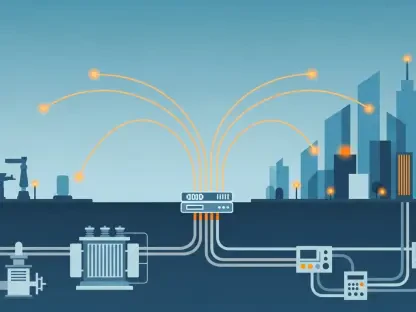The electric vehicle (EV) market has been heralded as the future of transportation, yet not every model is destined for long-term success in this rapidly evolving landscape, where challenges loom large for automakers. Amidst the push for sustainable mobility, five particular EVs—Acura ZDX, Dodge Ram 1500 REV, Dodge Charger Daytona R/T, Nissan Ariya, and Genesis Electrified G80—are facing an uncertain fate, with projections indicating they may not survive past 2026. This troubling trend raises critical questions about the challenges automakers encounter in balancing innovation with market realities. What factors are driving these vehicles to the brink so soon after their debut or even before hitting the roads? The answers lie in a complex interplay of consumer hesitancy, economic barriers, and strategic recalibrations within the automotive industry. As North America grapples with a slowdown in EV adoption, these models serve as cautionary tales of an industry at a pivotal moment. Their stories reveal not just individual failures but broader systemic issues that could shape the trajectory of electric mobility for years to come. Delving into the reasons behind their impending downfall offers valuable insights into the hurdles that must be overcome for EVs to achieve mainstream acceptance.
Stumbling Blocks of Consumer Adoption
The journey of electric vehicles toward widespread acceptance has hit a significant speed bump, with consumer adoption rates lagging behind the ambitious projections of many automakers. For the Acura ZDX, introduced in 2024, the road ended abruptly with its discontinuation announced by September of the current year, barely a year after its launch. Despite boasting a respectable range of 313 miles for its rear-wheel-drive variant and a spacious interior, the model failed to capture buyer interest. Acura pointed to a broader reluctance among consumers to fully embrace electric technology as the primary reason for pulling the plug. This hesitancy reflects a market still grappling with concerns over infrastructure, such as the availability of charging stations, and lingering doubts about the practicality of EVs for everyday use. The swift exit of a vehicle with solid fundamentals underscores how deeply rooted consumer skepticism can derail even promising entries in the EV space.
Beyond individual models, the broader trend of slowing EV uptake is evident in the fate of vehicles like the Dodge Ram 1500 REV, which never even made it to the production line. Canceled well before any units rolled out, Dodge attributed the decision to uncertain demand, particularly in the electric truck segment. Consumer reports have frequently highlighted reliability issues with electric pickups, from battery performance in extreme conditions to concerns over towing capacity compared to traditional gas-powered trucks. This lack of confidence among potential buyers creates a ripple effect, prompting manufacturers to reassess their commitments to fully electric models. When the market signals doubt, automakers are often quick to pivot, prioritizing financial stability over risky innovation. The Ram 1500 REV’s story is a stark reminder that consumer trust is a cornerstone of EV success, and without it, even well-conceived projects can falter before they begin.
Strategic Pivot to Hybrid Solutions
As the electric vehicle market faces headwinds, a noticeable shift toward hybrid and plug-in hybrid models is emerging as a pragmatic response among automakers. Dodge, after scrapping plans for the all-electric Ram 1500 REV, has redirected its focus to the Ram 1500 Ramcharger, an extended-range hybrid offering a robust 663 horsepower and a 141-mile electric range before switching to gas power. This strategic move indicates a belief that hybrids can serve as a bridge for consumers not yet ready to commit to fully electric vehicles. Hybrids mitigate range anxiety—a persistent concern for many buyers—while still delivering environmental benefits through reduced emissions. By blending the familiarity of gas engines with electric efficiency, manufacturers like Dodge are catering to a market seeking compromise over complete transformation, reflecting a cautious but adaptive approach to electrification.
This trend of favoring hybrids is not unique to Dodge; Nissan’s handling of the Ariya further illustrates the industry’s pivot. Despite the Ariya’s competitive range of 205 to 289 miles depending on trim and its modern, appealing design, production for the U.S. market has been paused as of the current year. Instead, Nissan is channeling resources toward the more affordable Leaf EV and exploring hybrid options for future lineups. This reallocation suggests a recognition that cost-conscious buyers may find hybrids or budget-friendly EVs more accessible, especially in a market where enthusiasm for premium electric models is cooling. The shift also highlights a broader consensus among automakers that a gradual transition, rather than an abrupt leap to full electrification, aligns better with current consumer preferences and infrastructure limitations. Such decisions are shaping the competitive landscape, potentially sidelining fully electric models that fail to adapt to these evolving priorities.
Economic Barriers and Market Perceptions
Pricing remains a formidable obstacle for many electric vehicles, often determining whether a model thrives or fades into obscurity. The Genesis Electrified G80, with a starting price of $77,000, exemplifies how steep costs can alienate potential buyers, even when luxury and performance are on offer. Despite its elegant design mirroring the gas-powered version and its status as a premium sedan, the G80 struggled to justify its price tag in a market increasingly sensitive to value. The expiration of federal tax credits in September of the current year further eroded its appeal, stripping away a key financial incentive that could have offset the high cost. Without such subsidies, luxury EVs face an uphill battle to convince consumers that the switch to electric is worth the premium, especially when comparable gas models offer similar features at a lower price point. This economic challenge reveals a critical gap between manufacturer expectations and buyer willingness to invest.
Compounding the pricing issue are gaps in performance and consumer perception that can undermine even technically impressive EVs. The Dodge Charger Daytona R/T, launched with 496 horsepower and a 308-mile range, positioned itself as a contender in the electric muscle car niche. Yet, after just one year on the market, it is being phased out, with only the higher-end Scat Pack trim slated to continue into 2026. While its specs were noteworthy, they fell short of the most cutting-edge EVs in terms of speed and efficiency, and demand for electric performance vehicles appears limited. Consumer perceptions of EVs as less thrilling or less reliable than their gas counterparts—despite evidence to the contrary in many cases—can dampen interest. This situation illustrates how market success hinges not just on raw numbers but on winning over hearts and minds, a task that remains elusive for many electric models facing entrenched biases and competitive pressures.
Competitive Pressures and Short Lifecycles
The electric vehicle market is an unforgiving arena where rapid innovation and fierce competition leave little room for underperformers. The Nissan Ariya, introduced as a compact electric SUV with a sophisticated cabin and a range of up to 289 miles, seemed poised for success. However, its production for the U.S. market was halted within a short span, reflecting Nissan’s strategic shift toward more accessible options like the Leaf EV. This quick turnaround points to the intense pressure automakers face to capture market share swiftly. In a landscape crowded with alternatives, EVs that fail to stand out in terms of price, features, or brand loyalty risk being sidelined. The Ariya’s pause underscores how even well-designed vehicles can struggle if they don’t resonate immediately with buyers or align with a manufacturer’s broader financial goals, highlighting the high stakes of the EV race.
Short lifecycles are becoming a hallmark of the EV industry, as seen with models like the Acura ZDX, which lasted just one year before discontinuation. This rapid obsolescence is driven by a combination of market saturation and the need for constant innovation to keep pace with rivals. Automakers are under immense pressure to deliver groundbreaking technology or unbeatable value, and when a model misses the mark, resources are quickly redirected to more promising ventures. Additionally, external factors such as shifting government policies and economic conditions can accelerate a vehicle’s demise, leaving little time for course correction. For consumers, this creates a perception of instability in the EV market, potentially deterring purchases if new models seem likely to vanish as quickly as they appear. The brevity of these vehicles’ tenures signals an industry still searching for the right formula to balance risk and reward in the push toward electrification.
Navigating the Road Ahead
Reflecting on the challenges that led to the downfall of these five electric vehicles, it’s clear that the path to widespread EV adoption is fraught with obstacles that demand strategic agility from automakers. The Acura ZDX, Dodge Ram 1500 REV, Dodge Charger Daytona R/T, Nissan Ariya, and Genesis Electrified G80 each faced unique hurdles—whether it was sluggish consumer interest, prohibitive pricing, or performance shortfalls—but their stories collectively point to an industry reevaluating its approach. Manufacturers must contend with a market that isn’t fully prepared for a complete shift to electric power, prompting many to pivot toward hybrid solutions as a more immediate answer to buyer needs.
Looking forward, the lessons from these discontinued models suggest actionable steps for the industry to strengthen its footing. Automakers might consider prioritizing affordability and consumer education to build trust and demand for EVs, addressing concerns like range anxiety through targeted marketing and improved infrastructure support. Investing in hybrid technology as a transitional tool could help ease buyers into electrification while battery costs decrease and charging networks expand. Additionally, tailoring EV designs to offer distinct advantages over gas vehicles—beyond mere replication—could shift perceptions and justify premium pricing. As the automotive sector moves toward 2026 and beyond, these strategies could pave the way for a more stable and inclusive electric future, ensuring that innovation aligns with market readiness rather than racing ahead of it.









